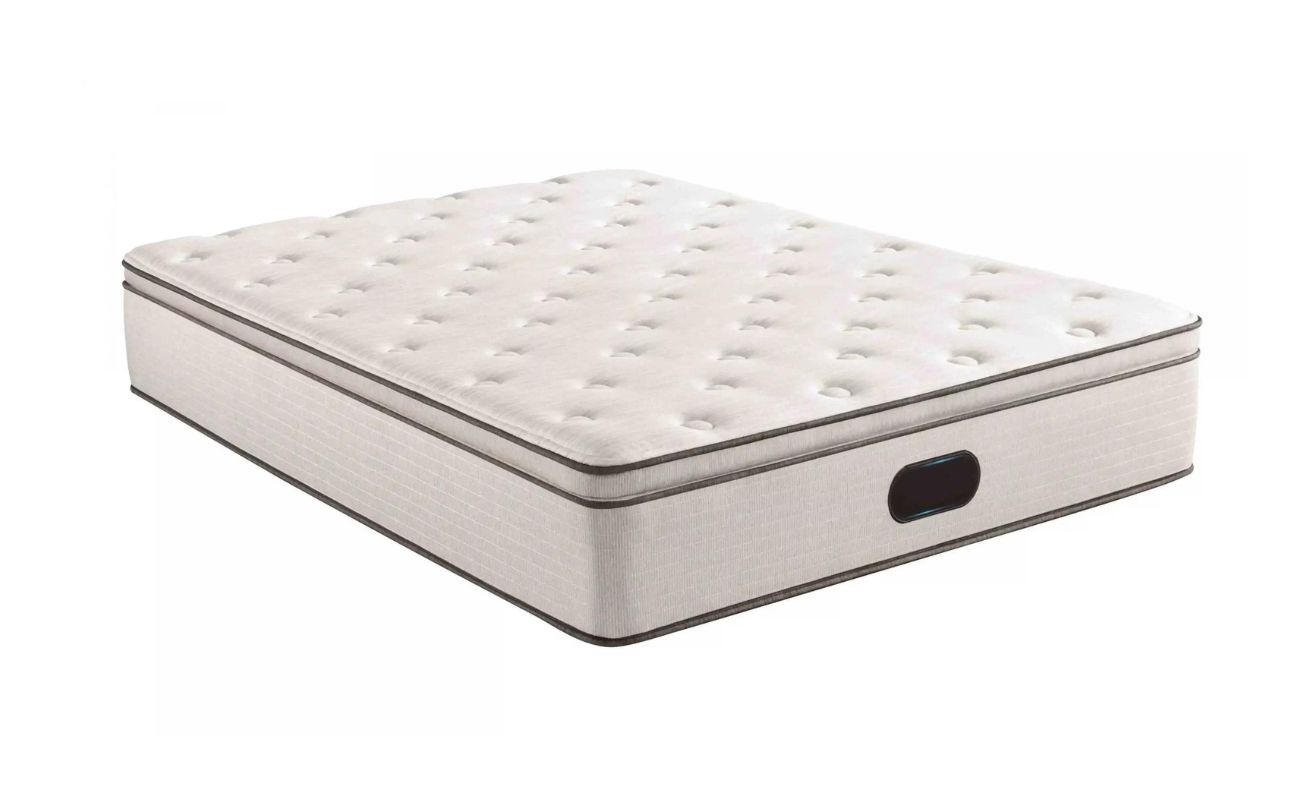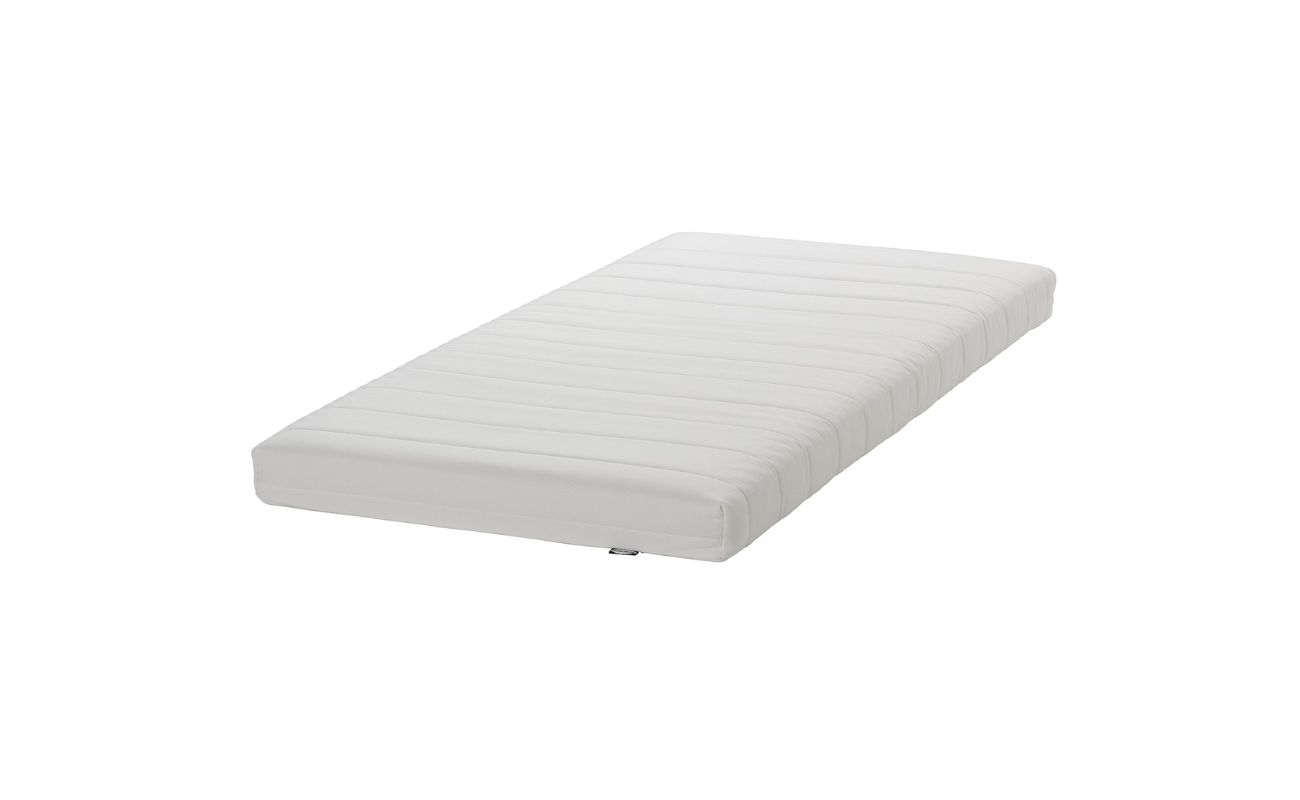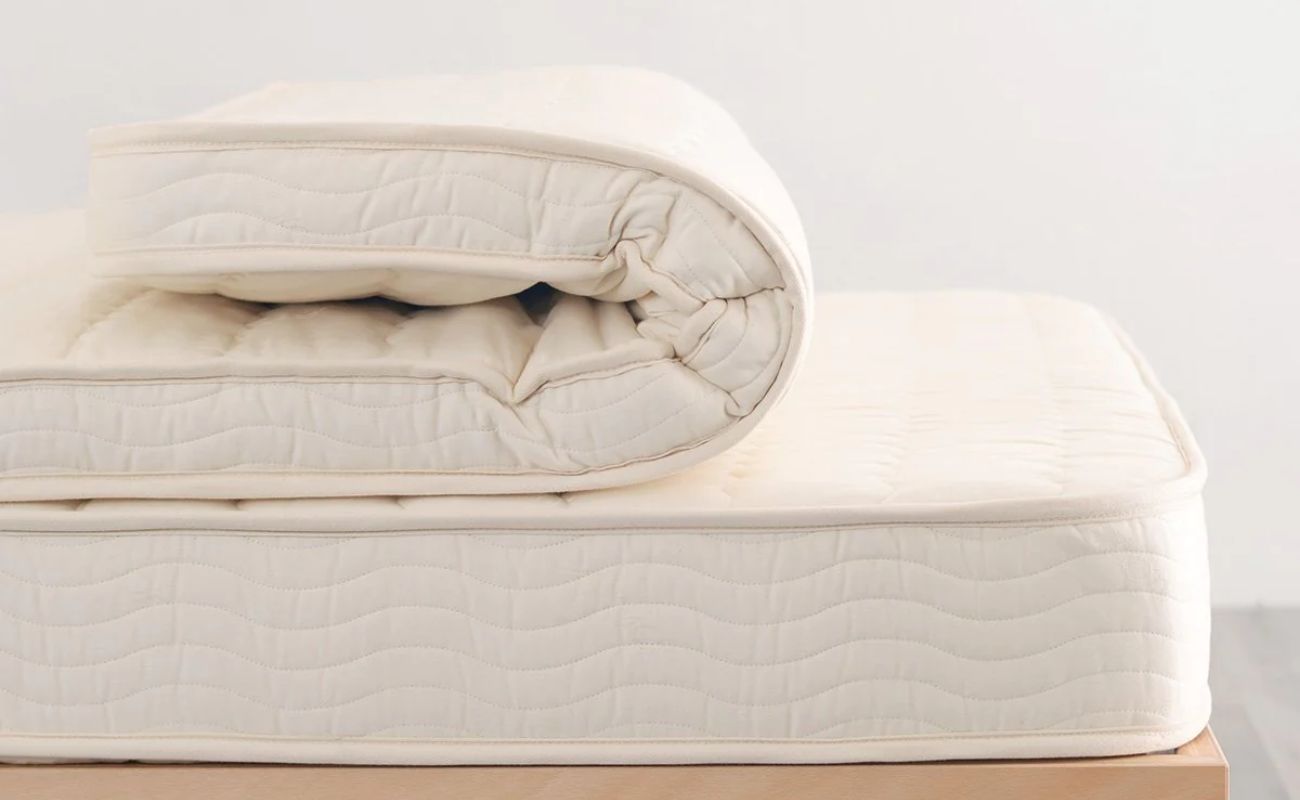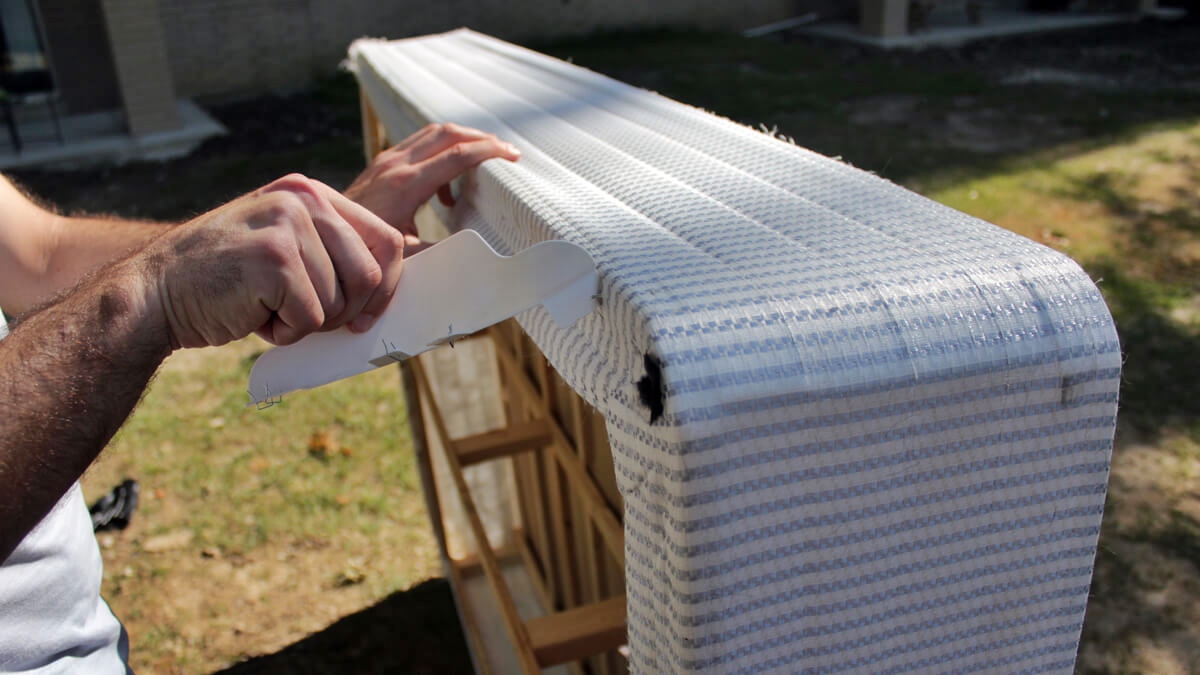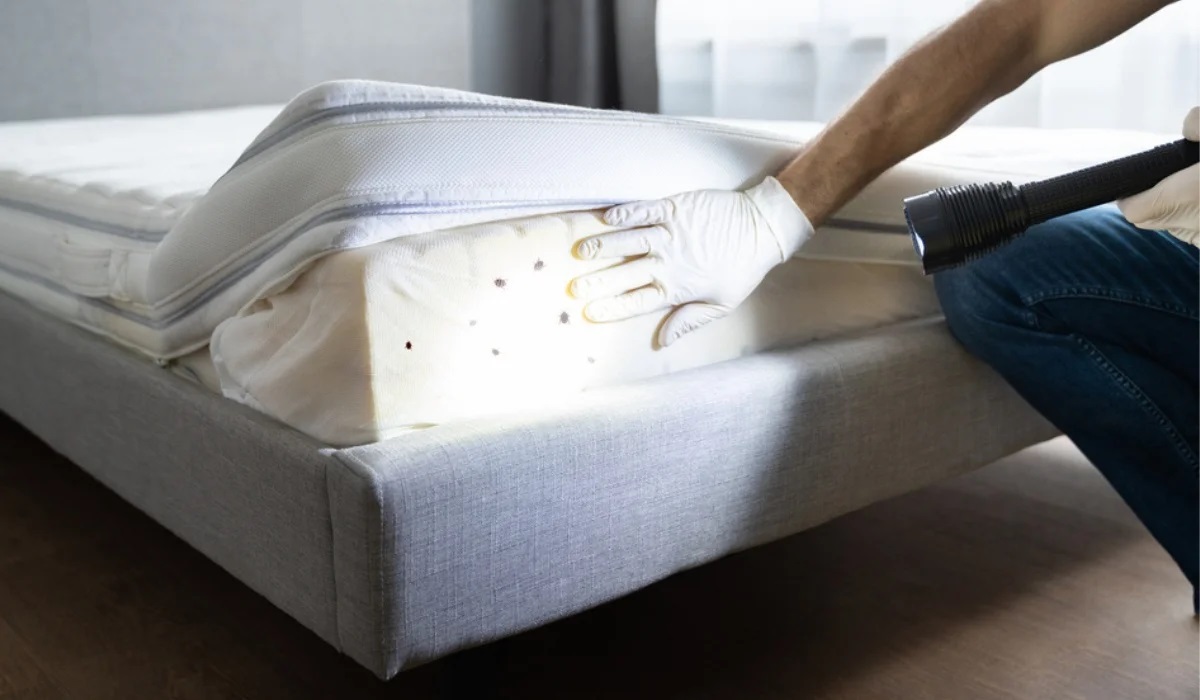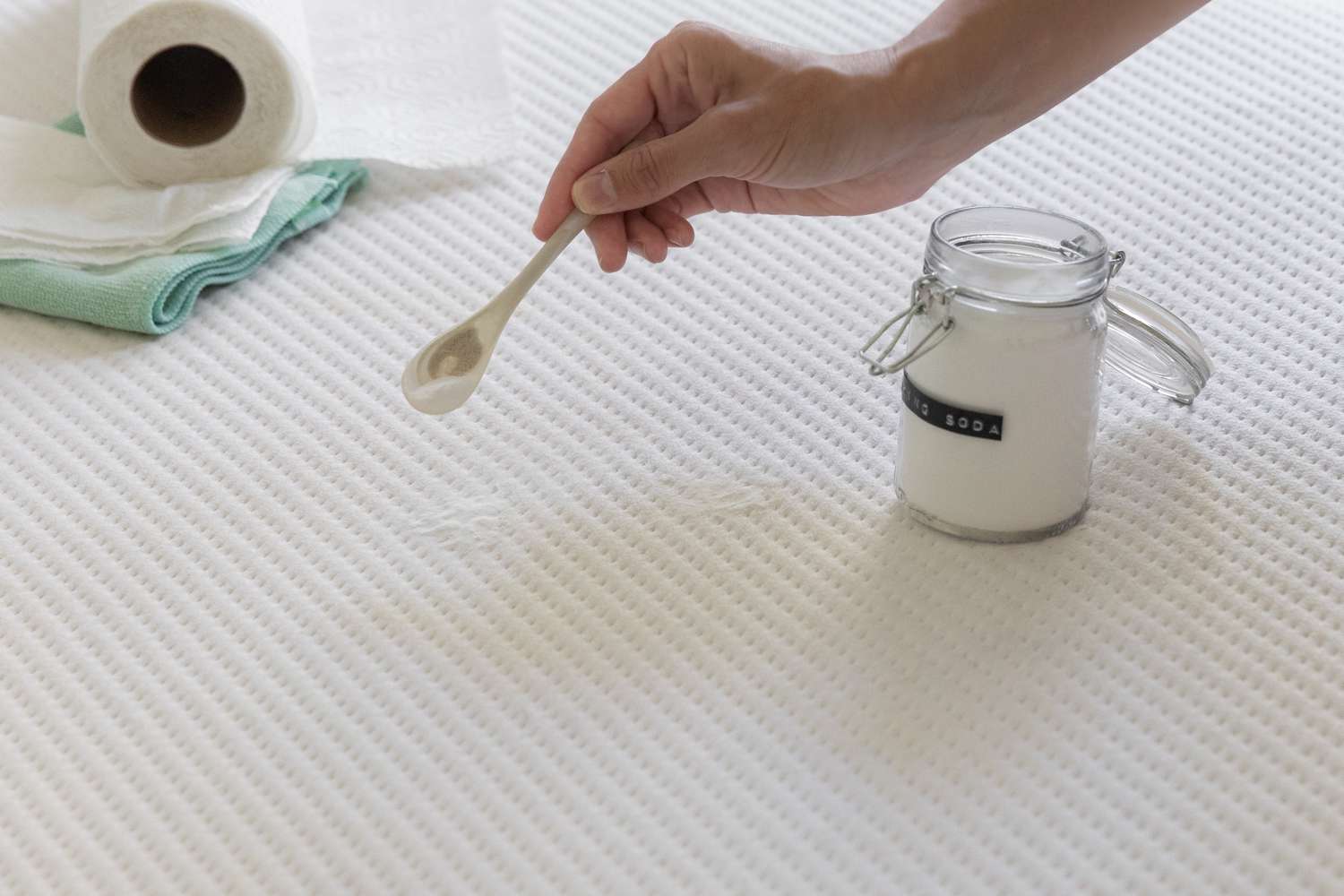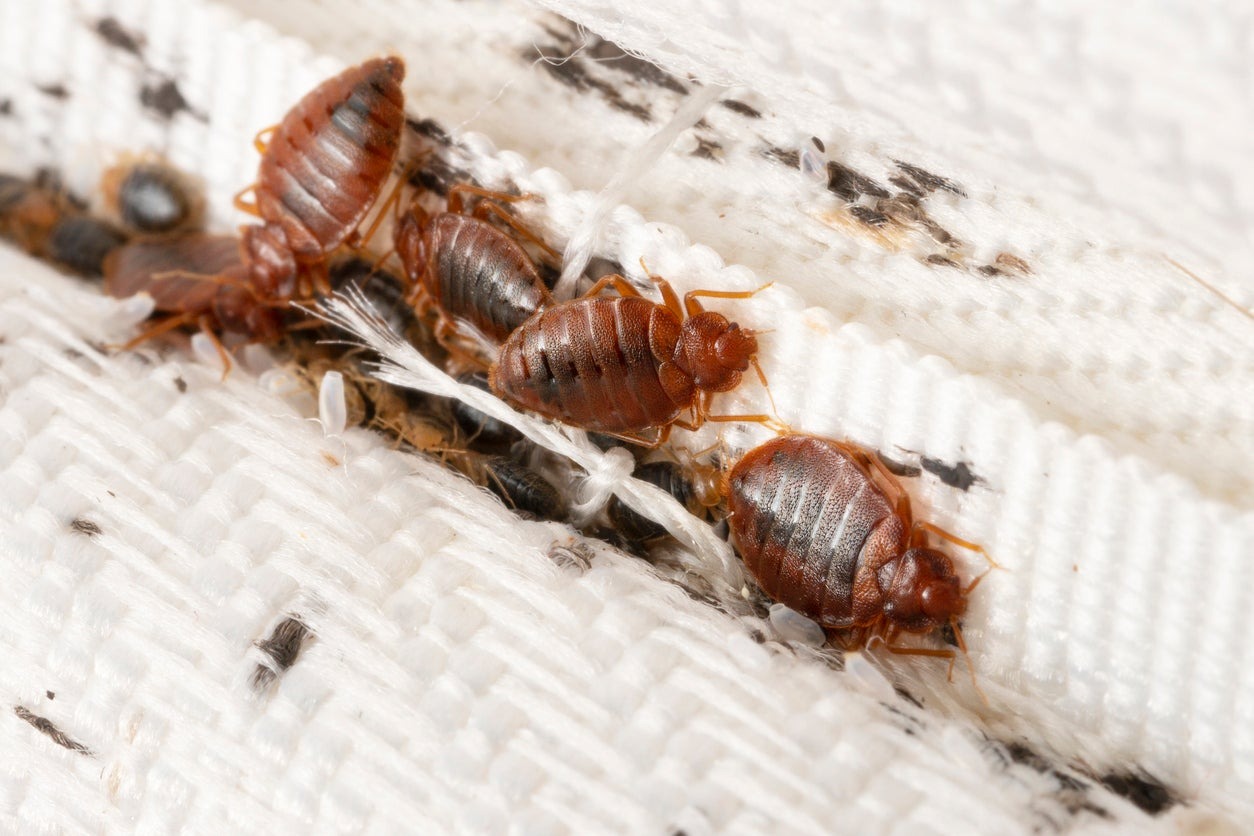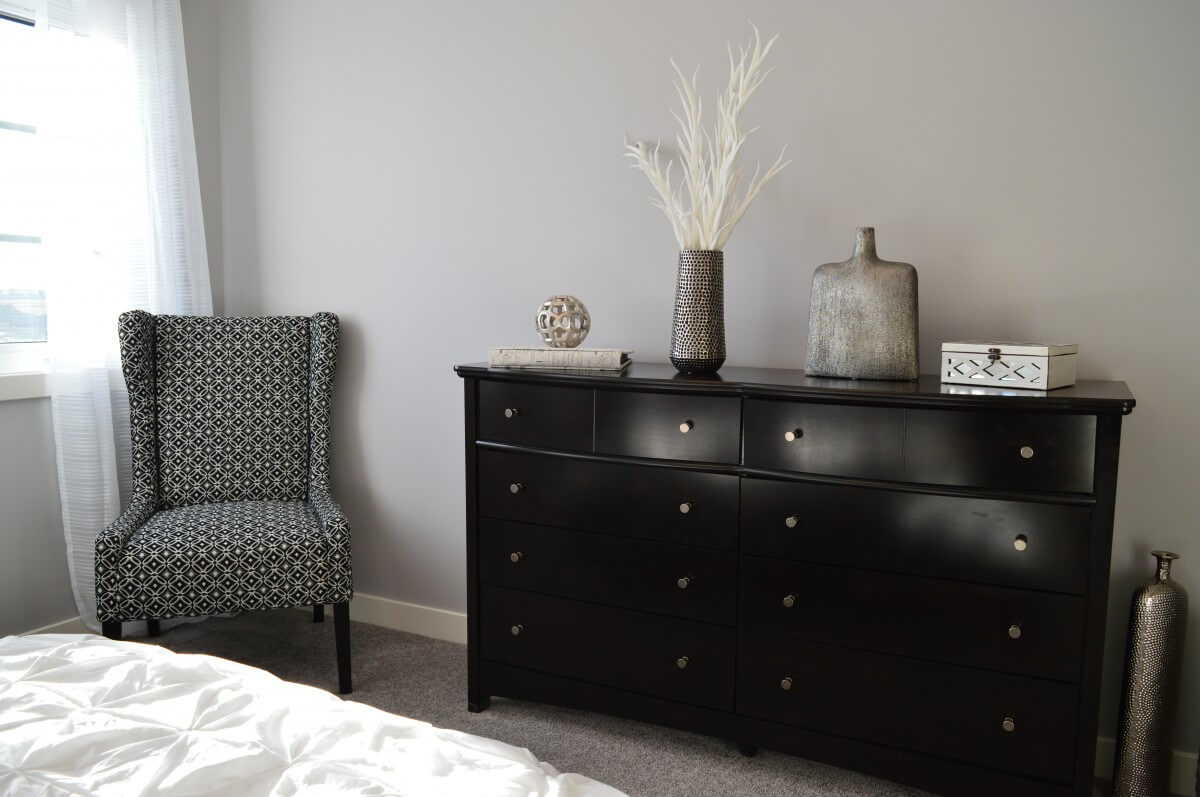Home>Furniture>Bedroom Furniture>How To Get Rid Of Scabies On A Mattress
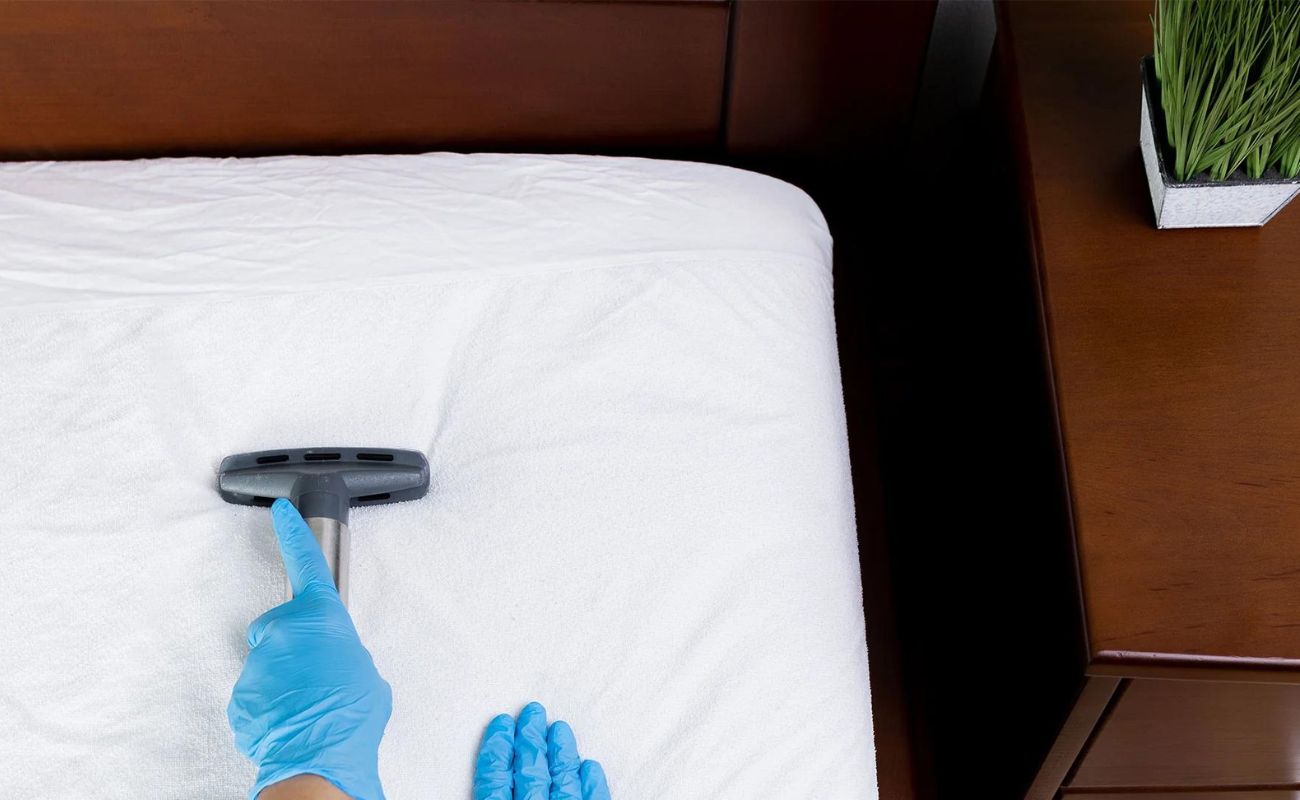

Bedroom Furniture
How To Get Rid Of Scabies On A Mattress
Modified: November 2, 2024
Learn how to effectively remove scabies from your mattress with our helpful guide. Protect your bedroom furniture and eliminate the itchiness.
(Many of the links in this article redirect to a specific reviewed product. Your purchase of these products through affiliate links helps to generate commission for Storables.com, at no extra cost. Learn more)
Introduction
Welcome to our comprehensive guide on how to get rid of scabies on a mattress. Scabies is a highly contagious skin condition caused by tiny mites infesting the skin’s surface. It can be a frustrating and irritating problem to deal with, especially when the infestation extends to your mattress. However, with the right approach and the right knowledge, you can effectively eliminate scabies and create a clean and safe sleeping environment.
Scabies is typically transmitted through direct skin-to-skin contact with an infected person. The female mites burrow into the top layer of the skin to lay their eggs, causing a range of symptoms such as intense itching, rashes, and blisters. If left untreated, scabies can spread rapidly and cause discomfort and distress.
In this guide, we will walk you through the process of identifying scabies on a mattress and provide you with effective solutions to eliminate the infestation. We will also discuss preventative measures to avoid scabies infestation in the future. It’s important to note that in severe cases, it may be necessary to consult a healthcare professional for appropriate medical treatment.
So, let’s dive into the details and learn how to effectively get rid of scabies on your mattress, ensuring a peaceful and hygienic sleep environment for you and your loved ones.
Key Takeaways:
- Combat scabies infestations by thoroughly cleaning and disinfecting your mattress, using anti-scabies covers, and incorporating natural remedies. Prioritize health and hygiene to create a safe sleep environment.
- Prevent scabies infestations by practicing good personal hygiene, regularly washing bedding, vacuuming mattresses, and maintaining a clean living space. Stay informed and take proactive measures for a restful night’s sleep.
Read more: How To Get Rid Of Fleas On A Mattress
Understanding Scabies
Before we delve into the methods of getting rid of scabies on a mattress, it’s important to understand this skin condition and how it can impact your sleep environment.
Scabies is caused by a tiny mite called Sarcoptes scabiei that burrows into the top layer of the skin. These mites are not visible to the naked eye and are mainly transmitted through direct skin-to-skin contact with an infected person. However, scabies can also be spread through infested bedding, clothing, or furniture, including mattresses.
The most common symptoms of scabies include intense itching, especially at night, red rashes, small blisters, and the presence of burrows or tracks on the skin. Scabies infestation can be highly uncomfortable and may lead to secondary skin infections if left untreated.
When it comes to mattresses, scabies mites can burrow into the fabric and linger in the fibers, potentially leading to re-infestation even after treating the skin. Therefore, it’s crucial to address the issue comprehensively by targeting both the infested mattress and treating the affected individuals.
Keep in mind that scabies can affect anyone, regardless of age, gender, or socioeconomic background. It’s important to take prompt action if you suspect scabies infestation to prevent its spread and minimize discomfort.
Now that we have a basic understanding of scabies, let’s move on to identifying scabies on a mattress and the necessary steps to eliminate them effectively.
Identifying Scabies on a Mattress
Identifying scabies on a mattress can be a bit challenging since the mites themselves are invisible to the naked eye. However, there are some signs you can look out for to determine if your mattress is infested with scabies.
1. Skin Stains: Scabies mites tend to leave behind stains on the mattress fabric. These stains may appear as small reddish-brown or black spots. If you notice such stains on your mattress, it could be an indication of scabies infestation.
2. Itching and Discomfort: If you or anyone sleeping on the mattress experiences persistent itching, especially at night, it can be a sign of scabies infestation. While this symptom alone does not confirm the presence of scabies on the mattress, it warrants further investigation.
3. Rashes and Blisters: If you or your family members have developed rashes or small blisters on your skin, especially around areas that come in contact with the mattress, it could be an indicator of scabies infestation in the mattress.
4. Residue on Bedding: You may notice small crusts or flakes on the bedding or pillowcases that can be a result of scabies mite activity. These tiny particles can be a sign that the mites have infested your mattress.
5. Traces of Mites: In some cases, you may be able to see scabies mites or their eggs on your mattress. These might appear as small white or grayish specks or tiny bumps on the mattress surface.
If you notice any of these signs, it’s important to take immediate action to address the scabies infestation on your mattress. The following sections will guide you through the steps to clean and disinfect your mattress properly, eliminating the mites and creating a safe sleeping environment.
Cleaning and Disinfecting the Infested Mattress
Once you have identified scabies infestation on your mattress, it’s crucial to thoroughly clean and disinfect it to eliminate the mites and prevent further spread. Follow these steps to effectively clean and disinfect your infested mattress:
1. Strip the Bedding: Start by removing all bedding, including sheets, pillowcases, and mattress covers. Place them in a sealed plastic bag to prevent any potential mites from dispersing.
2. Vacuuming: Use a high-powered vacuum cleaner with a HEPA filter to thoroughly vacuum the entire surface of the mattress. Pay special attention to the seams, crevices, and tufting areas, as these are common hiding spots for scabies mites and their eggs. Empty your vacuum immediately into a sealed bag and dispose of it outside your home.
3. Steam Cleaning: Steam cleaning can effectively kill scabies mites and their eggs. Use a steam cleaner with a high temperature setting and run it over the entire surface of the mattress. Make sure to cover every inch, focusing on areas that are most likely to harbor mites. Allow the mattress to dry completely before proceeding to the next step.
4. Disinfecting Solution: Create a disinfecting solution by mixing equal parts of water and rubbing alcohol or a diluted bleach solution. Dampen a clean cloth or sponge with the solution and gently wipe down the mattress surface, paying close attention to any stained or affected areas. This process will help kill any remaining mites or bacteria.
5. Allow for Drying and Air Circulation: After disinfecting the mattress, allow it to air dry completely before covering it with clean bedding. Open up windows and let fresh air circulate in the room to aid in drying and ventilation.
6. Wash Bedding and Linens: While the mattress is drying, wash all bedding, including sheets, pillowcases, and mattress covers, on the hottest setting recommended for the fabric. This will help eliminate any remaining mites or eggs that may have been transferred onto the bedding.
7. Re-Encase the Mattress: Once the mattress and bedding are completely dry, encase the mattress with a waterproof and dust mite-proof mattress cover. This will provide an additional level of protection against future infestations.
By following these steps, you can effectively clean and disinfect your infested mattress, removing scabies mites and creating a healthier sleeping environment. However, it’s important to note that scabies treatment should not be limited to the mattress alone. It should also involve treating the affected individuals and taking necessary precautions to prevent re-infestation.
Using Anti-Scabies Mattress Covers
In addition to cleaning and disinfecting your infested mattress, using anti-scabies mattress covers can provide an extra layer of protection against future infestations. These covers are specifically designed to prevent scabies mites or other allergens from penetrating the mattress, creating a barrier between you and the mites. Here are a few key points to consider when using anti-scabies mattress covers:
1. Selecting the Right Cover: Look for mattress covers that are specifically labeled as anti-scabies or dust mite-proof. These covers are typically made of a tightly woven fabric that keeps mites from penetrating the mattress. Ensure that the cover is the correct size and fits snugly over the entire mattress.
2. Encasing the Mattress: Once you have selected the appropriate cover, carefully encase the mattress with the cover. Start by sliding one end of the cover over the mattress and then gradually work your way down, ensuring a tight and secure fit. Zip up the cover completely to seal the mattress.
3. Frequency of Cleaning: It’s a good idea to clean the anti-scabies mattress cover regularly to keep it free from dust and allergens. Check the manufacturer’s instructions for specific cleaning recommendations. Some covers can be machine washed, while others may require spot cleaning or professional dry-cleaning.
4. Complete Coverage: Ensure that the mattress is completely covered by the anti-scabies cover, including all sides and corners. This helps to prevent any potential mite entry points and ensures maximum protection against infestation.
5. Combining with Other Preventative Measures: While anti-scabies mattress covers provide excellent protection against mites, it’s important to remember that they are just one part of a comprehensive approach to preventing scabies infestation. It’s essential to maintain good personal hygiene, regularly wash bedding, vacuum the mattress, and seek medical treatment if necessary.
6. Regular Replacement: Over time, anti-scabies mattress covers may wear out or become less effective. It is recommended to replace them every 18 to 24 months or sooner if you notice signs of damage or wear. This ensures that your mattress remains protected and free from scabies infestation.
By using anti-scabies mattress covers, you can create a barrier that prevents scabies mites from infesting your mattress and potentially causing future infestations. These covers are an essential tool in maintaining a clean and hygienic sleeping environment.
After treating the affected person, vacuum the mattress thoroughly and then encase it in a tightly woven, zippered cover to prevent any remaining mites from escaping.
Read more: How To Get Rid Of A Mattress In Denver
Vacuuming and Sunlight Exposure for Scabies Elimination
In addition to cleaning and disinfecting your mattress, incorporating regular vacuuming and sunlight exposure into your scabies elimination routine can greatly help in eradicating these pests. Here’s how you can use vacuuming and sunlight exposure to eliminate scabies:
Vacuuming:
1. Use a vacuum cleaner with a HEPA filter for optimal results. HEPA filters can effectively trap tiny particles, including scabies mites and their eggs.
2. Vacuum the entire surface of your mattress, focusing on seams, crevices, and tufting areas. These are common hiding spots for scabies mites.
3. Run the vacuum cleaner slowly and in multiple directions to ensure thorough cleaning. Pay extra attention to areas where you found stains or traces of mites earlier.
4. Once you have finished vacuuming the mattress, empty the vacuum immediately into a sealed bag and dispose of it outside your home. This prevents any potential mites from reinfesting the area.
Sunlight Exposure:
1. Sunlight is a natural and effective way to kill scabies mites. Take advantage of sunny days to expose your mattress to direct sunlight.
2. Carefully carry your mattress to an outdoor area where it can receive direct sunlight. Ensure that it’s placed on a clean and elevated surface.
3. Leave the mattress in the sunlight for several hours, preferably during the hottest part of the day. The UV rays from the sun will help kill the mites and eggs.
4. Flip the mattress halfway through the exposure time to allow both sides to receive sunlight.
Combining vacuuming and sunlight exposure can act as powerful tools against scabies infestations. The vacuuming process physically removes mites and their eggs, while sunlight exposure’s UV rays provide natural disinfection.
It’s important to note that sunlight exposure alone may not completely eliminate scabies from your mattress. However, it is a valuable supplementary step that enhances the overall effectiveness of your scabies elimination strategy.
Continue implementing these practices regularly to maintain a clean and hygienic sleep environment and to help prevent future scabies infestations.
Applying Natural Remedies on the Mattress
Alongside cleaning and disinfecting your mattress, using natural remedies can provide an additional layer of defense against scabies infestations. These remedies are safe and environmentally friendly alternatives to chemical-based solutions. Here are some effective natural remedies to consider:
1. Tea Tree Oil: Tea tree oil is known for its powerful antimicrobial and insecticidal properties. Mix a few drops of tea tree oil with water in a spray bottle and lightly mist the mattress. Alternatively, you can add a few drops of tea tree oil to your laundry when washing bedding or mattress covers to help eliminate scabies mites.
2. Neem Oil: Neem oil is derived from the neem tree and has been used for centuries as a natural insecticide. Mix a few drops of neem oil with water and spray it onto your mattress. Allow it to dry before covering the mattress with clean bedding.
3. Lavender Oil: Lavender oil has anti-inflammatory and antiseptic properties, making it a useful remedy for scabies infestations. Mix a few drops of lavender oil with water in a spray bottle and spray it onto the mattress. Lavender oil also has a calming scent that can promote better sleep.
4. Eucalyptus Oil: Just like lavender oil, eucalyptus oil has antimicrobial properties that can help eliminate scabies mites. Dilute a few drops of eucalyptus oil with water and spray it onto the mattress. You can also add eucalyptus essential oil to your laundry when washing bedding.
5. Clove Oil: Clove oil possesses strong antimicrobial properties that can help kill scabies mites and reduce the chances of reinfestation. Dilute a few drops of clove oil with water and spray it onto the mattress. However, be cautious with clove oil as it has a potent aroma and can cause skin irritation if used in excess.
6. Baking Soda: Baking soda is a natural deodorizer and can help eliminate odors caused by scabies mites. Sprinkle a generous amount of baking soda onto the mattress surface and leave it for a few hours. Vacuum up the baking soda to remove any debris and odors.
These natural remedies can work alongside other cleaning and disinfection methods to help eliminate scabies mites and create a healthier sleep environment. However, it’s important to note that individual sensitivities and allergies may vary, so it’s recommended to test these remedies on a small, inconspicuous area of the mattress before applying them widely.
Remember, natural remedies should be used as complementary measures and not as a substitute for medical advice or professional treatment. If you have a severe scabies infestation, it’s important to consult a healthcare professional for appropriate treatment options.
Seeking Professional Help
While there are various methods to eliminate scabies on a mattress, it’s important to recognize that severe infestations may require professional intervention. Seeking the help of a healthcare professional can ensure proper diagnosis, treatment, and guidance throughout the process. Here are a few reasons why you may consider seeking professional help:
1. Accurate Diagnosis: It can be challenging to accurately diagnose scabies infestations, especially if you’re not familiar with the symptoms. A healthcare professional can examine your skin and determine if scabies is the cause of your discomfort. This helps ensure that the right treatment is administered.
2. Prescription Medications: In severe cases, over-the-counter treatments may not be sufficient to eradicate scabies mites. A healthcare professional can prescribe stronger topical or oral medications that specifically target scabies mites and their eggs. These medications are often more effective in eliminating the infestation.
3. Guidance and Monitoring: Healthcare professionals can provide valuable guidance throughout the treatment process. They can instruct you on how to properly apply medications, manage symptoms, and prevent further spread of scabies. They can also monitor your progress and adjust the treatment plan if necessary.
4. Identification of Reinfestation Sources: If you continue to experience scabies infestations despite your efforts, a healthcare professional can help identify potential sources of reinfestation. They can provide insights on how to address other areas of your home or potential contacts that may be contributing to the recurrence.
5. Support for Secondary Infections: Scratching scabies rashes can lead to secondary infections. A healthcare professional can assess and treat any secondary infections that may have occurred to prevent complications and promote healing.
Remember, scabies is a highly contagious condition, and effectively eliminating it requires a comprehensive approach. While home remedies and cleaning methods can be helpful, professional guidance ensures that the infestation is properly addressed and reduces the risk of potential reinfestation.
If you suspect scabies on your mattress or are experiencing persistent symptoms, it’s best to consult a healthcare professional who can provide the appropriate guidance, treatment, and support throughout the process.
Prevention Tips to Avoid Scabies Infestation on Mattresses
Preventing scabies infestation on mattresses is essential for maintaining a clean and healthy sleep environment. By implementing these preventive measures, you can significantly reduce the risk of scabies and other infestations:
1. Practice Good Personal Hygiene: Regularly wash your hands with soap and water, especially after coming into contact with someone who has scabies or any contaminated surfaces. Maintaining good personal hygiene helps reduce the chances of spreading scabies mites to your mattress.
2. Avoid Direct Skin Contact: Avoid direct skin-to-skin contact with individuals who have scabies or are suspected of having the infection. Scabies mites are primarily transmitted through close physical contact, so being mindful of your interactions can help prevent infestations.
3. Wash Bedding Regularly: Wash your bedding, including sheets, pillowcases, and mattress covers, regularly in hot water. High temperatures help kill any potential mites or eggs that may have latched onto the fabric. Be sure to dry the bedding thoroughly before using it again.
4. Vacuum Mattresses and Upholstered Furniture: Regularly vacuum your mattress and upholstered furniture to remove any dust, dirt, and potential mites. Use a vacuum cleaner with a HEPA filter for optimal results. Pay attention to seams, crevices, and tufting areas where mites may hide.
5. Encase Mattresses with Protective Covers: Utilize protective mattress covers that are specifically designed to prevent the penetration of mites and allergens. These covers create a barrier between your body and the mattress, reducing the risk of scabies infestation.
6. Avoid Sharing Personal Items: Refrain from sharing personal items such as bedding, towels, and clothing with individuals who have scabies or are suspected of having the infection. Sharing these items can easily transfer scabies mites and increase the likelihood of infestation.
7. Maintain a Clean Environment: Keep your sleeping area clean and clutter-free. Regularly dust and sanitize surfaces to minimize the presence of mites or other potential allergens that can contribute to an infestation.
8. Educate Yourself and Others: Stay informed about scabies and educate your family members or roommates about the signs, symptoms, and preventive measures. By raising awareness, you can collectively work towards preventing scabies infestation and maintaining a healthy living environment.
By incorporating these preventive tips into your routine, you can significantly reduce the risk of scabies infestation on your mattress. However, if you suspect scabies or experience persistent symptoms, it’s crucial to seek medical advice and appropriate treatment to effectively address the infestation.
Read more: How To Get Rid Of A Mattress In Chicago
Conclusion
Scabies infestation on a mattress can be a bothersome and uncomfortable problem to deal with. However, by taking the necessary steps to identify, clean, and prevent future infestations, you can create a safe and hygienic sleep environment for you and your loved ones.
In this comprehensive guide, we’ve covered a range of techniques to help you effectively get rid of scabies on your mattress. From understanding scabies and identifying infestations to cleaning and disinfecting the mattress, using anti-scabies mattress covers, and incorporating natural remedies, you now have a toolkit of strategies to combat scabies infestations.
Remember, seeking professional help is crucial in severe cases or if you experience persistent symptoms. Healthcare professionals can provide accurate diagnosis, prescribe appropriate medications, and guide you through the treatment process.
Prevention is key when it comes to scabies infestations. By practicing good personal hygiene, regularly washing bedding, vacuuming mattresses, encasing them with protective covers, and maintaining a clean environment, you can significantly reduce the risk of scabies and promote a healthier living space.
Ultimately, prioritizing your health and taking proactive measures can ensure a scabies-free mattress and provide peace of mind for a restful night’s sleep. By keeping yourself informed and maintaining good hygiene practices, you can effectively prevent scabies infestations and promote a clean and comfortable sleep environment for years to come. Sleep tight!
Now that you're equipped with knowledge on keeping your mattress free from scabies, why stop there? Tackle other pesky home invaders by learning how to get rid of pantry moths. Our next guide provides expert advice on effective pest control strategies, ensuring your kitchen remains safe and sanitary. Don't let these unwelcome guests take over—take action today and enjoy a cleaner, healthier home environment.
Frequently Asked Questions about How To Get Rid Of Scabies On A Mattress
Was this page helpful?
At Storables.com, we guarantee accurate and reliable information. Our content, validated by Expert Board Contributors, is crafted following stringent Editorial Policies. We're committed to providing you with well-researched, expert-backed insights for all your informational needs.
